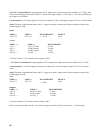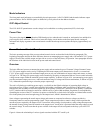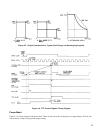
65
4
Principles of Operation
Introduction
This chapter contains block diagrams, simplified schematics, and related descriptions of the power supply. The instrument
can be thought of as comprising two major sections: the GPIB, microcomputer, and interface circuitry; and the power mesh
and control circuits. Block diagrams represent the GPIB board, the front panel board, and the power mesh and control
board. The descriptions associated with these block diagrams explain the function of each block without describing how
individual components within the circuit accomplish that function. Detailed descriptions are provided only for those
individual circuits whose operation may not be obvious to the user.
The circuit names and layouts of the block diagrams are the same as used on the complete schematics; however, some items,
such as bias supplies, are left off the block diagrams for clarity. In general, circuits are described as they appear on the
diagrams from left to right. Signal names that appear on the drawings are printed in capitals in the descriptions, as are
front-panel labels for indicators and controls. Signal names that describe an operating mode or condition are active when
that condition exists. For example, OT is high and
OT is low if an overtemperature condition exists. Signal flow is from left
to right and top to bottom, unless arrows indicate otherwise.`
The following paragraphs describe the GPIB and the front-panel board. These circuits provide the interface between the
power mesh circuits and the controller and/or operator. The GPIB and front-panel boards are referenced to earth common.
Isolation is achieved by optical isolators on the GPIB board. Data is sent between boards serially.
GPIB Board
Circuits on the GPIB board, see Figure 4-1, provide the interface between the power supply and the user, generate the
fault/inhibit and relay controls signals (DFI/RI), and supply the analog control and reference signals for the power mesh and
readback circuit. Two microprocessors (primary and secondary) control all data communication between the power supply
and the user. Additional circuits on the GPIB board include the serial interface ports, address switches, an EEPROM, and
status registers.
Primary Microprocessor
The primary microprocessor controls the GPIB/serial link interface, the front panel data communication, and the DFI/RI
interface. It communicates with the secondary microprocessor through two serial link data lines that are optically coupled to
provide the proper isolation of the user interface from the power mesh. The GPIB board also has a ROM, which contains
the operating firmware, and a RAM, which stores variables such as programmed voltage and current and readback values.
Address Switches
The primary microprocessor determines the GPIB address by reading the address switch settings. Two of the address
switches determine the power-on SRQ state and the DFI/RI port setting.


















